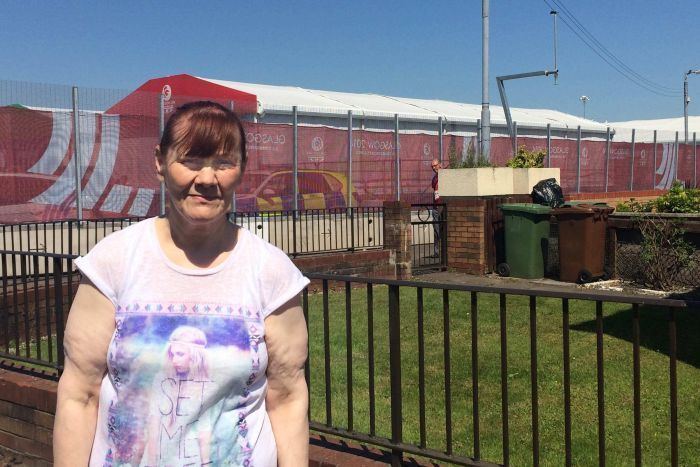Status In use Architectural style International Style Construction started March 2012 | Type Accommodation Developer City Legacy consortium Completed January 2014 | |
 | ||
Similar Cuningar Loop, Commonwealth Arena and Sir Chris, Tollcross International Swimmin, Dalmarnock railway station, Glasgow National Hockey C | ||
The Athletes Village for the 2014 Commonwealth Games will be situated on a 35 hectare site, in the east end of Glasgow. The whole project has been designed by the Paul Stallan Studio @ RMJM. At first the site will be used as accommodation for up to 8000 athletes and officials from all over the Commonwealth nations, as well as providing a retail area, recreation area, dining hall and medical facilities for the athletes. After the commonwealth games the site will be further developed and have up to 1,400 homes, a portion of which will be available for social rental.
Contents
- Map of Athletes Village Glasgow UK
- Planning and construction
- Facilities
- After the games
- Location
- Accessibility
- References
Map of Athletes' Village, Glasgow, UK
Planning and construction
Work first began for the project in August 2009, with the City Legacy Consortium chose the 35 hectare site in the east end of Glasgow. The site was previously a mix of residential, industrial and open spaces with significant areas of vacant land with approximately 1,600 people living in the immediate are in around 859 households.
The Athletes Village has created up 1,500 jobs in Glasgow ranging from architects and designers to apprentices and highly skilled tradesmen from all over the world.
Site Clearance was required to allow the selective excavation of around 140,000m³ of contaminated soils and materials from different sections across 33 hectares out of the 35 hectare site. The majority of which was treated on site to permit its reuse. Soil washing using a bespoke plant – which was assembled specifically for this contract – was used on roughly 100,000m³. This method of soil washing is an extremely sustainable remediation option which took place on site. As a result, very little of the material had to go to landfill meaning less lorry movements; thus reducing costs and carbon footprint which is a key target of the games as well as the Scottish Parliament.
There is a huge focus on using energy and products which are both sustainable and re-usable promoting a friendly, green image for the games and Scotland. 10% of the energy to be used in the village is to be generated by sources of renewable energy on site, which will be included in the construction of the site. Also, at the very least 10% of the material used for the construction of the village will be recycled already.
Facilities
Primarily the site will be used as accommodation for the athletes competing in the games as well as team officials from every competing nation for the duration of the games. As well as accommodation the athletes' village will also provide an exclusive retail area for the athletes as well as a dining hall and medical facilities. This is to ensure the athletes and officials have a comfortable stay and have everything they need near by.
After the games
Following the Games, when the temporary facilities are removed from the Games site, more land will be cleared for housing, with up to 1,400 homes being built.
Officials say the building methods used and the way energy is supplied to the site will reduce carbon emissions created by the work by about 60% of normal levels.
Ed Monaghan, from City Legacy, said: "The City Legacy Consortium is investing £150m to transform the area into a much sought-after riverside residential location which showcases the athletes' village as the best in contemporary and sustainable design."
The summation of approximately 1,400 homes, will consist of approximately 300 private homes, 400 homes for rent and a new, 120 bed, care home for the elderly. The planned mix of properties of different sizes and types will be important in creating a more diverse, yet balanced community in the area. This, in turn, will aid the sale of the properties. The unique design of the accommodation is highly flexible and allows for relatively simple post-Games retrofit. A school will also be built in the same area after the games are finished. The school will have 1800 places for students ranging from ages 3–18.
Location
The 38.5-hectare site set in Dalmarnock, in Glasgow's East End, aims to be a purpose-built village at the heart of one of Europe's largest regeneration areas. Designed with input from athletes, the Village will be right on the doorstep of Celtic Park, venue for the Opening Ceremony in July 2014, the new Commonwealth Arena and Sir Chris Hoy Velodrome, which were officially opened on 6 October 2012.
The location and proximity to key venues further demonstrates Glasgow 2014's commitment to making this a truly athlete centred and sport focused Games, the site in Dalmarnock will bring a legacy of 700 new homes and 620 jobs to the city.
Accessibility
The Games organizers are committed to developing a service that is efficient and frequent and promotes sustainable modes of transport.
Throughout the Games period, transport will play a crucial role for those enjoying the Games, those working at the Games, and those competing at the Games. Glasgow will host 4,500 athletes who will require transportation between the Athletes' Village, training venues and competition venues. Athletes will travel in minibuses or coaches, which will use, where necessary, dedicated lanes – known as the Games Route Network – to ensure they are given priority over other traffic in a similar way buses are in bus lanes. These lanes will form part of a larger dedicated Games Route Network that will also be used by people working on the Games.
After the Games, most of the 20 km (12 mi) that form the Games Route Network will be transformed into priority bus lanes. The permanent improvements will also include:
